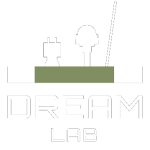Electron Back Scatter Diffractometry Images [Completed]
This page introduces a numerical framework and associated graphical user interface to perform high throughput microstructure statistical analysis from electron backscatter diffraction maps. Emphasis is placed on the detection of twin domains in hexagonal close-packed metals. Originally, the approach proposed leverages graph theory, group structures and associated numerical algorithms to automatically detect twins and unravel both their intrinsic characteristics features as well as those pertaining to their interactions.
The proposed graphical interface allows for the detection and correction of unlikely twin/parent associations rendering the approach applicable to highly deformed microstructures. Twin statistics and microstructural data are classified and saved in a relational database that can be interrogated to reveal a wide spectrum of features of the microstructure. Illustration of the approach is performed in the case of Zirconium.
The end result of our software is extracting the grains and internal twins as illustrated below for magnesium. Grains are delineated in yellow and twins in brown. Relation between a grain can be either tensile (green links) or compressive (magenta). Our software works mostly automatically but allows the user to correct misclassification of twinning relations. It then output all the statistics between grains, twins, neighbours, etc… inside an sqlite database.

Figure 1 illustrates the method on a dummy task. The task environment is rasterized into a 2D map and the expert provides the task solutions as a set of positions on the map. These are rasterized by drawing 2D gaussians around the expert solutions. Given a set of demonstrations, a Fully Convolutional Network (FCN) is trained to generate utility functions which maxima correspond to the expert solution.
This method is applied to two exploration toy cases, the art gallery problem and the fortress problem, and UAV network deployment.
The results have been presented in:
- Pradalier, Cédric; Juan, Pierre-Alexandre; McCabe, Rodney J.; Capolungo, Laurent; A Graph Theory-Based Automated Twin Recognition Technique for Electron Backscatter Diffraction Analysis. Integrating Materials and Manufacturing Innovation, 1-16, 2018. Draft version.

© 2019 – 2023 DREAM Lab – Georgia Tech